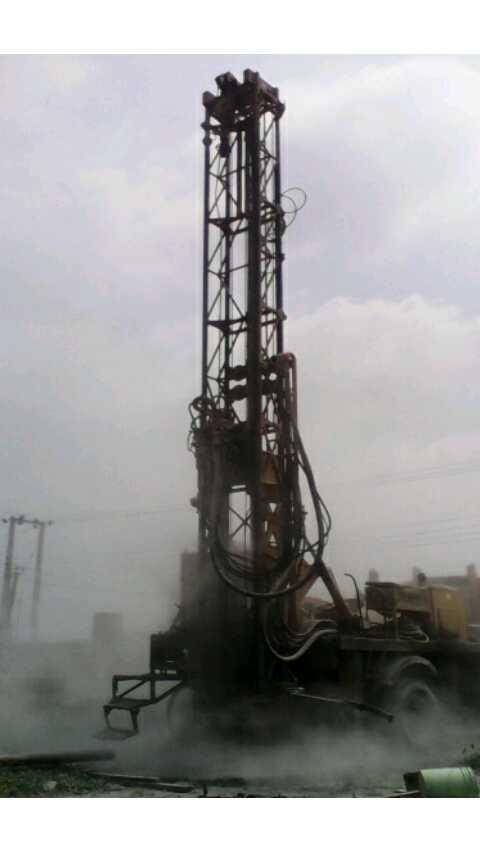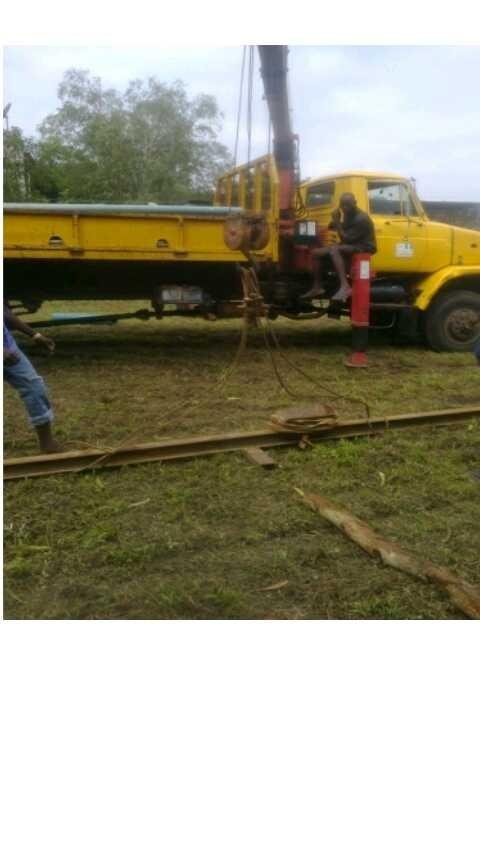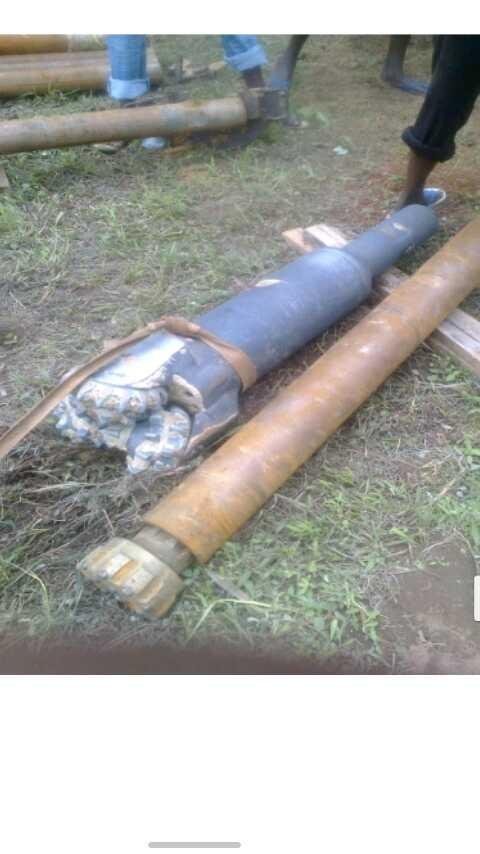THE BEST WAY OF EXPLORING GROUNDWATER

source: HEPHZIBAH
To explore groundwater simply refers to bringing water that has been infiltrate and percolate into the soil to become groundwater to the surface for use. There are many processes involved in bringing groundwater to the surface for use. This can be done through wells, boreholes, springs e.t.c. groundwater exploitation has become a very essential thing as the need for clean, safe and potable water by both man and other animals keeps increasing. But i #HEPHZIBAH will talk about the best among those process.
BOREHOLE
A borehole can be defined as a narrow shaft or hole usually vertical, escavated in the ground for the abstraction of groundwater. Water gotten from borehole serves as a substitute to well water which are usually shallower and wider than borehole. Boreholes are very common and widely used in the developing countries where water from surface water bodies are not properly and optimally treated and utilised. They can be main source of water supply to a community, or sustain livestock and crops during dry season. Water gotten from borehole is known to be very safe, clean and potable because groundwater is well protected from environmental pollution though there are exceptions.
**FEATURES OF A BOREHOLE.**
Boreholes consist of a drilled narrow hole usually about 6inches in diameter, descending to several meters below ground level (depending on the depth of the aquifer). Water tight rising main is inserted into this hole, with inlets in the bottom section to allow water to flow into the pipe.
The pipe is assembled in sections. At ground level, the borehole consists of the pump head, set in a concrete base, with a concrete apron surrounding the immediate area. The borehole around the water tight rising main is packed and sealed to prevent the ingress of surface pollutants. A capped access point enables the water level in the bore to be inspected. A fixed spigot delivers pumped water with enough clearance to enable a variety of containers to be placed beneath it. A concrete apron surrounds the boreholes, to channel spillages away from the head of the hole.
This prevents seepage of surface water into the borehole, carrying pollutants or bacteria into the well and contaminating it.
At depths up to 6m, simple suction pumps at ground level can pull the water column up the main, also known as pitcher pumps, this is a low cost solution with case of access to all moving points for maintenance and service beyond 7m depths.
Constraints of atmospheric pressure prevent this type of pump from functioning, instead; the water column must be pushed from beneath using a valve and cylinder device resting inside the main, at the bottom of the borehole. A series of the interlocking pump rods connects these devices to the surface where energy is usually imparted to the pump by band via a lever. The ‘downhole’ equipment requires special skills to maintain.
For depths greater that 50m, hand power becomes less viable and wear increases. Some of the stress of lifting the heavier water column can be offset by buoyancy aids on the pump rods hence the need for an alternative. Submersible pumps channelled to external energy sources such as electrical or solar power sources are usually used for very deep holes for the sake of convenience.
**BOREHOLE DRILLING**
Borehole drilling is a collective name for the processes involved in the narrow excavation of the ground for the extraction of natural resources such as water. It is an energy intensive process that can be done manually or mechanically.
**DRILLING METHODS**
There are different methods of drilling a borehole;
Mud drilling
Rotary or air drilling
Percussion drilling
Rotary drilling method was used at all the sites I visited during my industrial attachment.
**ROTARY DRILLING.**
This is also known as air drilling or ‘down the hole’ drilling. It is usually used in basement areas. The drilling fluid in this method is compressed air. An air compressor usually supplies pressure through a hose to a drilling rod attached to a drilling rig. Additional rods are attached to the rig as it drills through the earth until a desired depth is reached.
**DRILLING MACHINES AND EQUIPMENTS**
Drilling rig
Air compressor and hose
Crane
Drilling rods
Casing
Screens
Hammer bit
Tricon bit
Water tanker
Chain thong
Wrench
Sledge hammer
Fork
web
**Let me explain them one after the other:**
**DRILLING RIG**
Drilling rig is the primary equipment in borehole drilling. It is a heavy equipment with different parts fabricated from steel assembled on a heavy truck for easy transportation thus facilitating its operations.
The rig is used for boring the ground, making a deep narrow and round hole in the ground. The mast which carries the rotary head pump which drives the hammer, and drilling bit into the ground to drill the overburden and the basement complex. It is also used to push down and pull out the temporary casing etc.
The drilling rig comprises various parts such as the rotary head pump mast, swivel head, the centralizer, radiator, control panel etc.
**CRANE**
This machine is used to lift, move and transport heavy equipment on site.
 .
.
source:HEPHZIBAH
**COMPRESSOR**
This equipment supplies compressed air at a particular temperature and high pressure to the rig during hammering of the basement complex or flushing of the borehole. The part of compressor includes control panel, main steel diesel tank, compressor engine, radiator, oil filter etc.
**WATER TANKER**
The equipment is used to store and transport water to the drilling site. The water is useful for mixing materials such as cement, sand etc. The water can also be used to wash samples and all the equipment after drilling.
**CASING**
These are PVC pipes inserted in the hole above the basement rock to protect it and prevent it from collapsing. Their thickness ranges 1cm to 15cm and the heights also varies between 4fts and 15fts.
**SCREENS**
These are perforated PVC pipes inserted into the casing and allowed to go deeper in order to filter the water and prevent the introduction of particles that can clog the pump into the hole. They look like casing in every way except that they are perforated.
**PRESSURE HOSE**
This is a very long, thick, flexible tube with thread lining used to transport air at high pressure from the compressor to the rig during the drilling operation.
**DRILLING ROD**
These are hollow metallic heavy tubes used to drive the drilling bit into the ground during drilling operation. Each rod has threads at its end that allows it to fit in into another rod (attachment). These rods vary in length and diameter.
**HAMMER BIT**
This is a heavy metallic rod-like drilling equipment that has a head with buttons used for drilling through the basement complex. Hammer bit has a diameter of about six inches and made up of hardened steel with silicon carbide that helps crush the rock. It is also known as button bit.
**TRICON BIT**
This bit is made of heavy steel with several teeth. It has three heads that roll continuously and simultaneously into the overburden especially in lateritic environment. The head is about eight inches in diameter and this type of bit drills easily because it operates on rotation and not with much hammering motion.

source: HEPHZIBAH
**WEB**
This is a pair of metals used to guard the casing and also prevent particles from entering into the whole during drilling operation.
**Reference**
Beck A.E., 1981. Physical Principle of Exploration Method, London Macmillan. Pg. 7-19.
Carla, W.M (1997.) Groundwater and water resources In Fundamentals of Geology, 3rd Edition. The McGraw-Hill Companies, Inc., U.S.A Pg.264-280
Carla, W. M., (2000.) Waste disposal In Environmental Geology, 5th edition, McGraw-Hill Companies, Inc., USA Pg. 355-370.
Friedman, M.A. (1988.) Volatile organic compounds in groundwater and Leachate at Wisconsin Landfills, PUBL-WR-196-88. Wiscon Pgs. 311-340
Jain C.K., K.K.S.Bhatia and T. Vijay, (1995.) Groundwater quality monitoring and Evaluation around Kakinada Andhra Pradesh. Technical report, CS (AR)172. National institute of hydrogeology, Rorkee.
Makeig K.S. (1992). National buffers for sludge leachate stabilization of groundwater Geophysics Vol20 (4). Pgs.420-429.
Come on! I have found much of the article here:
http://www.academickids.com/encyclopedia/index.php/Borehole
I was honestly expecting you to dig a little deeper (see the pun here?) and provide us with your approach to this.
Doing this will only get you on the blacklist and not only you will not get any vote, but you will forever lose the support of SteemSTEM. And you will put me in a bad light, as your mentor. I thought we talked about these rules in the beginning. I am a little disappointed, because you seem like you could offer more. Working against the system will never get you anything.
I dont understand. I did all you ask me to do.
Ok please what is my mistake there please just tell me
You copied most of the article from the link I gave you and changed a few words. I didn't check to see the last part of the article but this is not accepted by the SteemSTEM standards.
You can't expect to copy an article from somewhere else and still be paid for it.
You have the chance to rewrite the article so it will comply with the rules.
Refer back to the information I have given to you and the discussion we had on Discord. It would be a shame to have talked for two hours for nothing.
I think you can still turn the article into an original and worthy one as the subject is clearly interesting.
Hey, @alex did you see my new post, i just posted that, and i make sure i follow all your rule, that is why it took me time
Please help me upvote and reesteemed it